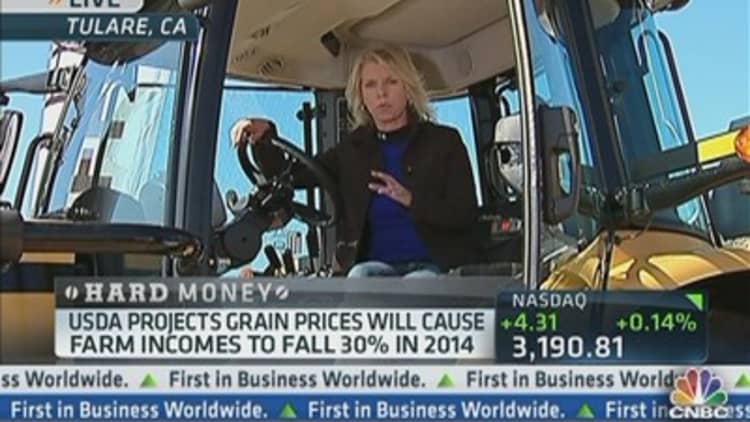On Wednesday, Deere reported earnings that topped analysts' estimates, but the company provided weaker-than-expected guidance.
Earnings came in at $1.65 per share, up from $1.30 per share last year, and beating expectations of $1.40 per share. However, the stock ended the day down 3.5 percent, after Deere said U.S. farm cash receipts for crops will fall 1.7 percent this year as crop prices continue to come off of their record highs.
With the stock near the low of the day, one option trader stepped in and bought 2800 March 90-strike calls for $2.39. This is a big bullish bet that the stock will rise above $92.39 by March expiration.
Last week, the USDA announced that they are expecting a record corn crop in the U.S. this year. Deere thinks that this could mean lower crop prices. Lower crop prices would mean farmers have less cash on hand to buy equipment, even if they have more to harvest.
Going forward, high corn and soybean prices will certainly help Deere's stock price—but that is not the only catalyst for growth. Brazil is one of the fastest growing markets for Deere's machinery, and could be a major driver of growth going forward.

Next year, Deere expects revenue from Brazil to grow 15 percent, and aims to increase sales in Brazil by $50 billion by 2018.
Growth concerns aside, Deere is also relatively cheap stock, which will limit any further downside. The company currently trades at a trailing price-to-equity ratio of 12, and forward price-to-equity ratio of 10. This places a conservative valuation on future growth, and opens the door to the possibility of upside surprises later this year.
This is a stock that I don't own, but I would consider adding it to a portfolio of value and dividend stocks.
Disclosures: None to report.
Brian Stutland is Managing Member of Stutland Equities and a contributor to CNBC's "Options Action."


